On this page
Getting started
You are viewing the documentation for Deno DeployEA. Looking for Deploy Classic documentation? View it here.
Deno DeployEA is in private beta. To use Deno Deploy EA you must join the Early Access program from the Deploy Classic account settings page.
After joining the Early Access program, you may still not immediately have access to Deno DeployEA as we are rolling out access in waves.
Create an organization Jump to heading
To get started with Deno DeployEA, you must first create a Deno DeployEA organization. You can do this by visiting app.deno.com.
Upon first visiting the dashboard, you’ll be greeted by the Deno Deploy EA organization creation screen:
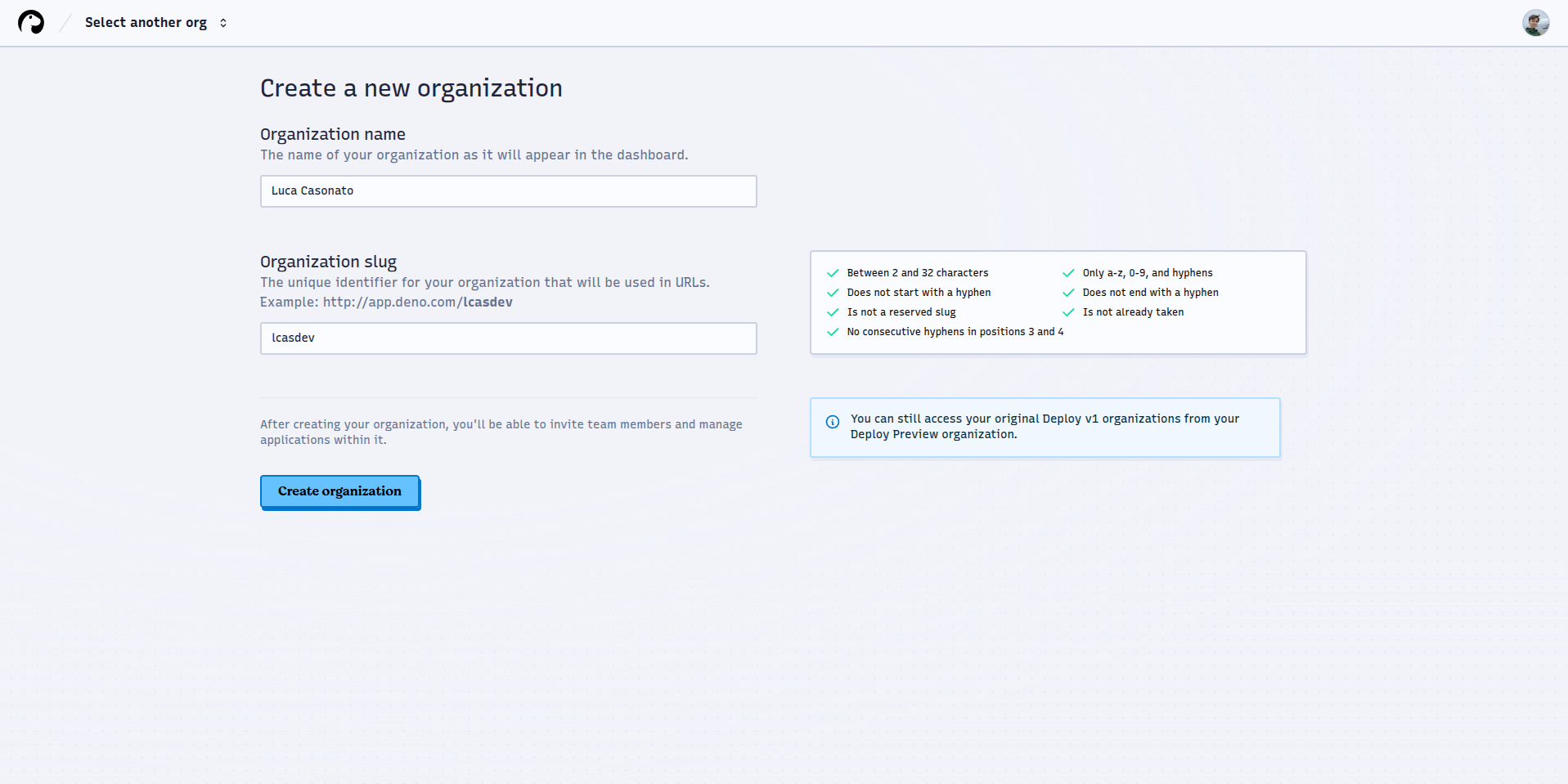
You can not currently create an organization that has the same slug as any project name in Deploy Classic.
Currently, the organization name and organization slug can not be changed after organization creation.
Create an app Jump to heading
After creating an organization, you will be redirected to the organization apps page, where you can see the list of all organizations in the app. From here you can navigate to the organization settings, and the custom domains list which manages the custom domains attached to your organization.
To create an app, press the + New App button:
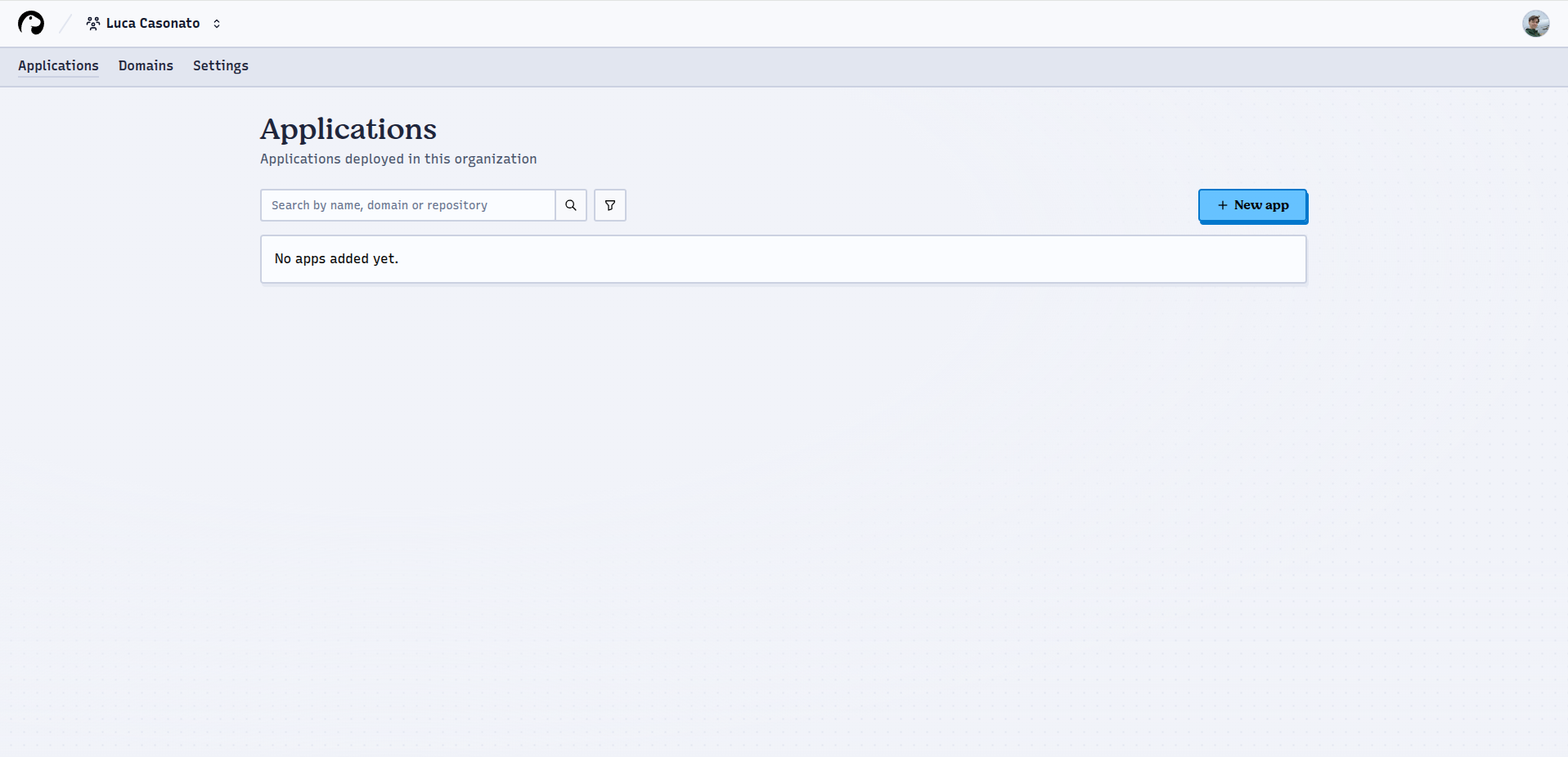
An application is a single deployed web service with one build configuration, build history, environment variables, attached custom domains, a linked GitHub repository, etc.
Select a repo Jump to heading

Next, you will need to select the GitHub repository to deploy your app code from. At time of writing, you must deploy from a GitHub repository.
If your repository does not show up, use the Add another GitHub account or
Configure GitHub App permissions buttons in the user/org, or repo dropdowns to
grant the Deno Deploy GitHub app permission to deploy your repositories.
⏳ We do not yet support deploying mono-repos (for example, repos where the actual application lives entirely in a subdirectory).
Configure your app Jump to heading
After selecting a GitHub repository, Deno DeployEA will automatically
attempt to detect the kind of application you are deploying and determine
appropriate build configuration. You can see the detected configuration in the
App Config box on the top right.
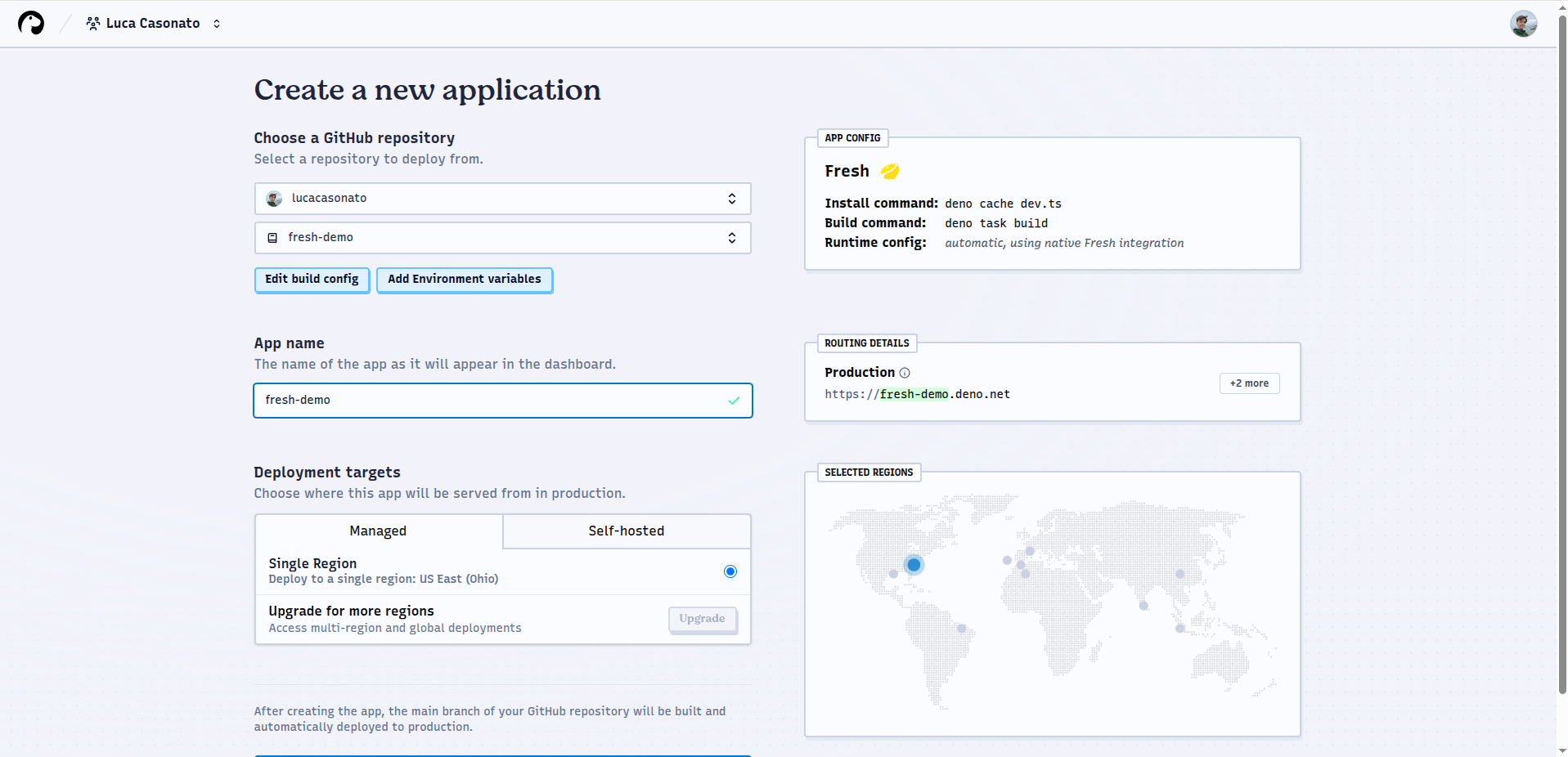
If the build configuration was incorrectly detected, or you want to make changes
to it, click the Edit build config button to open the build config drawer.

Configure your build Jump to heading
In the build config drawer you can edit the framework preset. If you are not
using a framework, or are using a framework that is not in the list, select
No Preset.
You can then edit multiple options depending on what preset you have selected:
install command Jump to heading
If you need to install dependencies before running the build command, such as
npm install, deno install, or similar, enter this command here. If you are
deploying a Deno application that does not have a package.json, you can
usually leave this empty.
Build command Jump to heading
The command to execute to take your source code and build/bundle/compile the
application to be able to deploy it. This could be a framework build command
such as next build, a build task in your package.json or deno.json, or a
any other shell script. If your application does not have a build command, such
as a server-side Deno application with a JavaScript or TypeScript entrypoint,
you can leave this field empty.
Runtime configuration Jump to heading
For most frameworks there are no options to configure here, as Deno Deploy
EA will figure out the ideal runtime configuration for the app based
on the framework preset. When a framework is not configured, you can choose here
whether the app is a Dynamic app that needs to execute code server side for
every request, such as an API server, server-side rendered application, etc., or
a Static app that consists only of a set of static files that need to be
hosted.
Dynamic Entrypoint Jump to heading
The JavaScript or TypeScript file that should be executed to start the
application. This is the file path that you would pass locally to deno run or
node to start the app. The path has to be relative to the working directory.
Dynamic arguments Jump to heading
Additional command line arguments to pass to the app on startup, after the entrypoint. These are arguments that are passed to the application not to Deno itself.
Static Directory Jump to heading
The directory in the working directory that contains the static files to be
served. For example,dist,_site, or.output.
Single Page App mode Jump to heading
Whether the application is a single page app that should have the root
index.html served for any paths that do not exist as files in the static
directory, instead of a 404 page.
Closing the drawer saves the settings.
Environment variables Jump to heading
On this page, you can also add environment variables by pressing the
Add/Edit environment variables button:
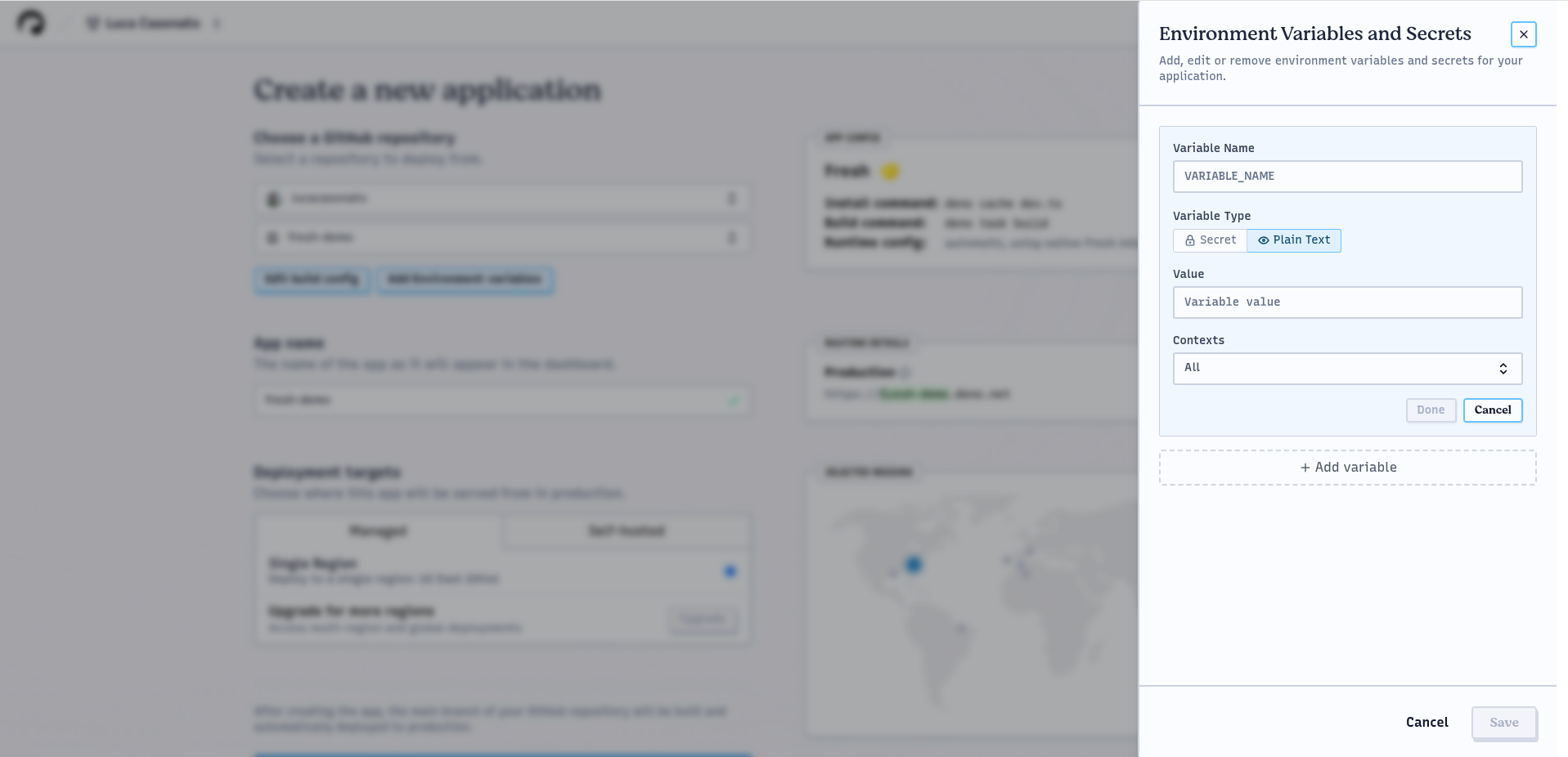
In this drawer, press the + Add variable button to create a new environment
variable for this project. You can give it a name, a value, and select whether
this variable should be saved in plain text (you can view the value from the
console later), or as a secret (you can not view the value from the console
later).
You can also select what contexts the environment variable should be available in. The available contexts are:
- Production: requests hitting your application through one of the
production domains, such as
<app>.<org>.deno.net, or a custom domain. - Development: requests hitting preview domains, or git branch domains of your application.
Environment variables must be added to at least one context, but can be added to multiple, or even all contexts.
To save the environment variables, press the save button. You can re-open the drawer to edit / remove environment variables you have added.
You can also edit the app name on this page, and select which region(s) the application should be served from.
Build and deploy your app Jump to heading
Finally, you can press the Create App button to create the app. This will
create the app and immediately trigger the first build:
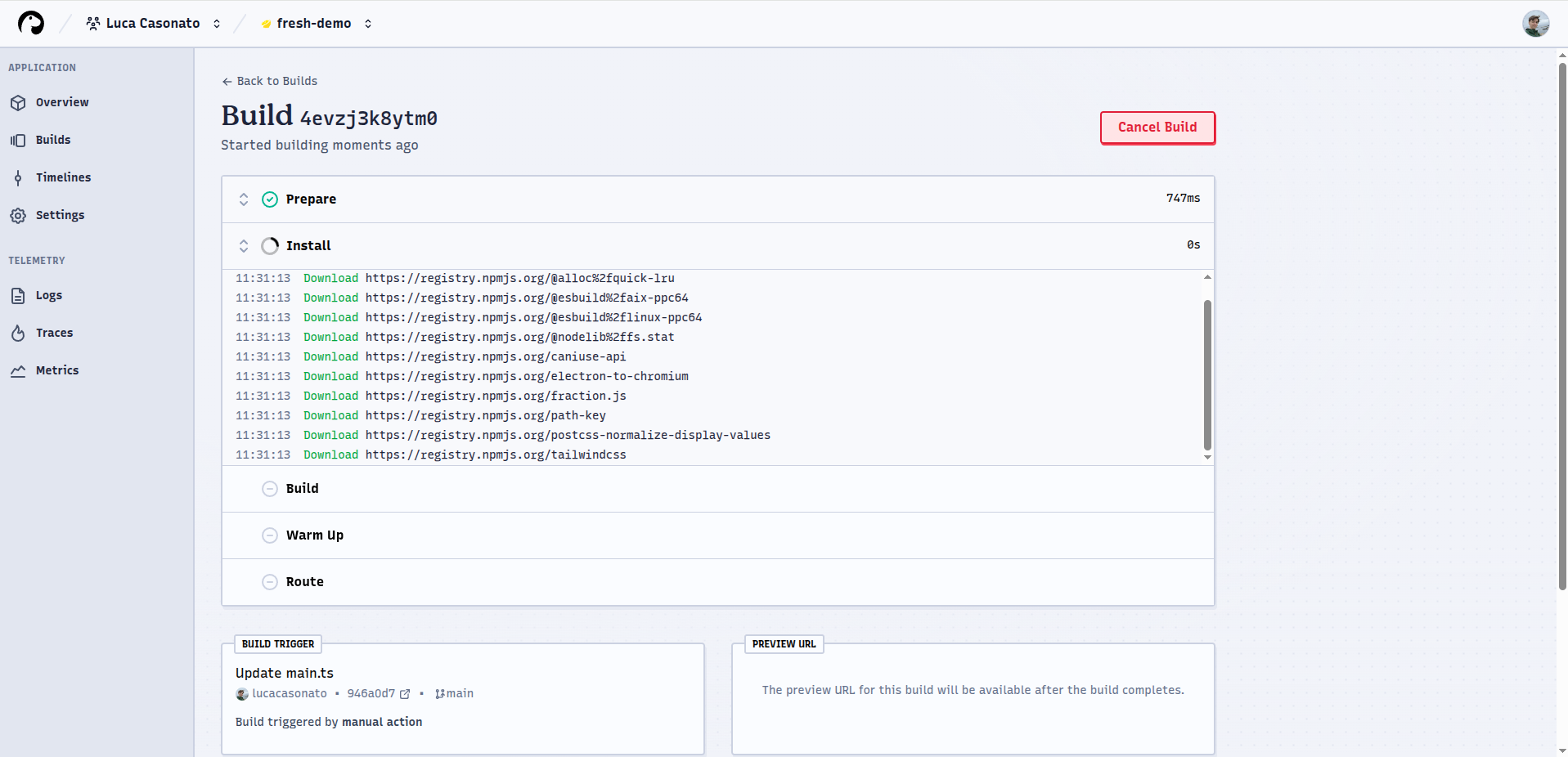
On the build page you can see live streaming build logs split into multiple sections:
- Prepare: cloning the GitHub repository and restoring build cache
- Install: executing the install command, and any framework specific pre-install setup
- Build: executing the build command, any framework specific pre- and post-build setup, and preparing the build artifact for deployment
- Warm up: sending a request to the preview URL of the deployment to ensure it starts up correctly. The logs shown in the Warm up section are Runtime logs, not build logs.
- Route: Deno Deploy is rolling out the new version of this build into all global regions.
In the top left of this build is a button to cancel the build. For failed builds, there is also a button to restart the build.
For completed builds, the top right shows the preview URL of the build. Further
down all timelines that this build is deployed to are shown, such as
Production, or Git Branch timelines.
You can also see how the build was triggered on this page. This can either be
manual action, for builds triggered through the UI, or GitHub repo for
builds triggered through the GitHub integration.
You can view the application through either the preview URL, or any of the other URLs shown in the timelines list.
Monitor your application Jump to heading
After visiting your application, you can view telemetry about your application in the form of the logs and traces available in our observability panels. You can visit these pages by clicking the respective buttons in the left sidebar.
Logs Jump to heading
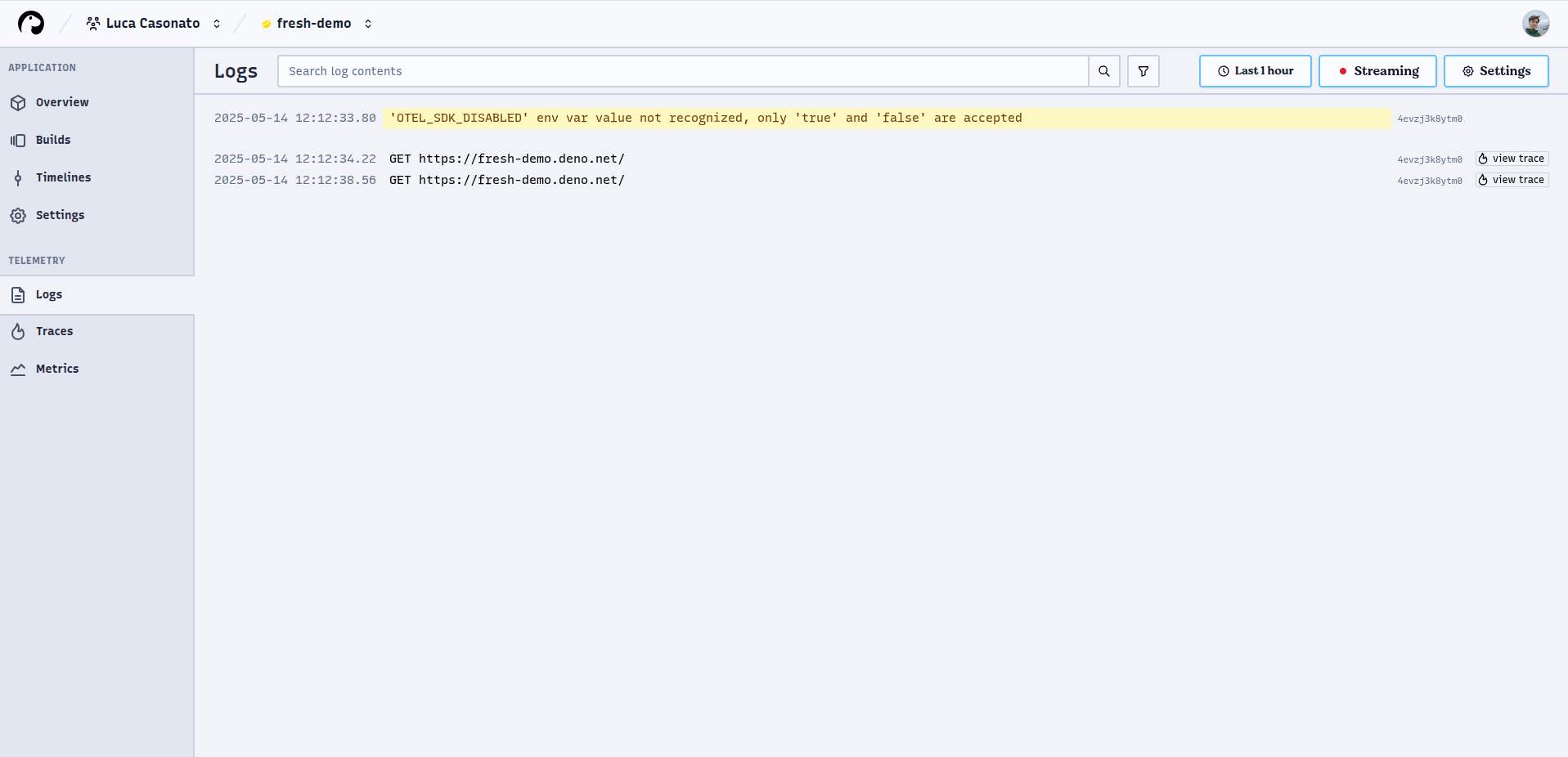
The logs page shows all recent logs in the project. By default logs from all
contexts (production and development) are shown, but using the filter button and
search bar at the top, the shown logs can be restricted. For example, to filter
to only production logs, add context:production to the search bar. To only
show logs from a certain revision, use revision:<id> etc.
You can also use full text search in the search bar. The full text search fill filter down the log entries to only those containing the text written, case-insensitively.
By default logs from the last hour are shown. The time picker in the top right can be used to adjust the time frame that logs are shown for. The time zone of the timestamps shown is the time zone set in the time picker.
The "view trace" button on the right of a log line shows up if a log line is correlated with a trace. This happens when a log line occurs within an active trace. Clicking this button will open the respective trace as an overlay.
Traces Jump to heading
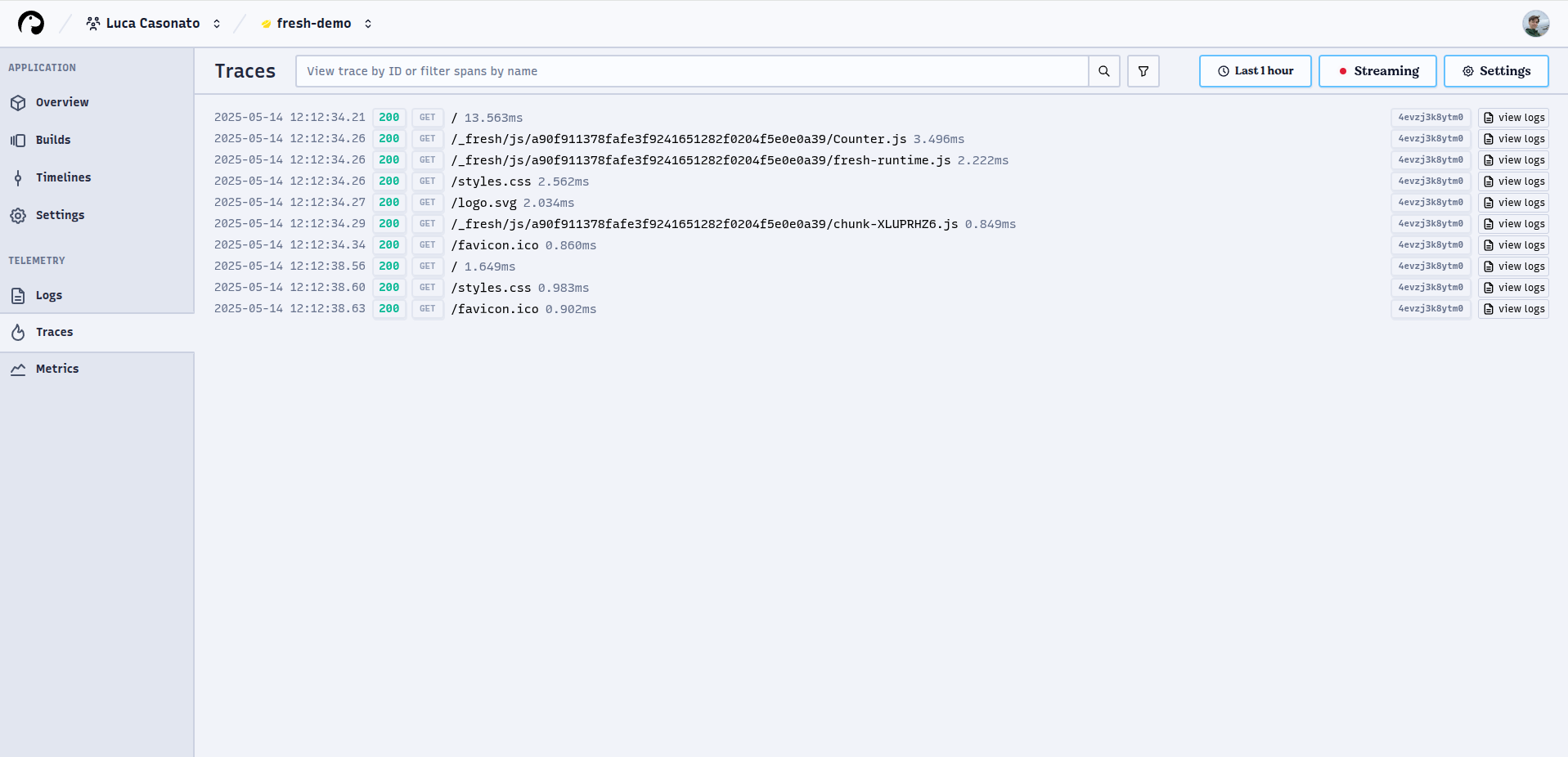
The traces page shows all recent traces in the project. By default traces from
all contexts (production and development) are shown, but using the filter button
and search bar at the top, the shown traces can be restricted. For example, to
filter to only production traces, add context:production to the search bar. To
only show traces from a certain revision, use revision:<id> etc.
All traces that contain an incoming HTTP request are shown in the list. The text shown for each trace is the path of the request, and the duration of the trace in milliseconds.
Clicking on a trace will open the trace view, which shows the full trace including all spans and logs that are part of the trace.
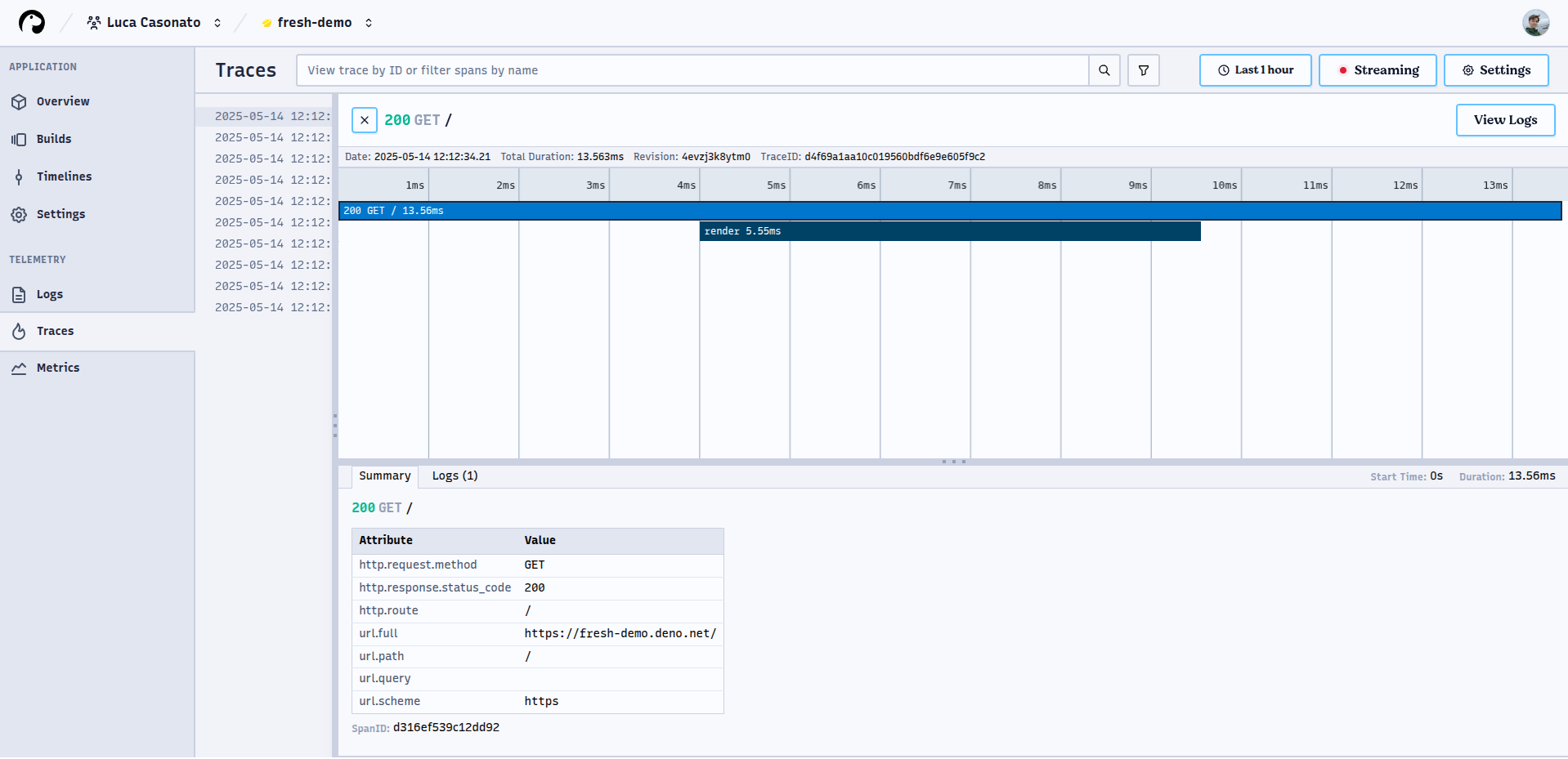
For each span in the trace you can see the duration of the span, the name of the span, the start and end time, and the recorded attributes. By clicking on a span in the timeline, the details of that span will be shown in the summary panel at the bottom.
The logs that are emitted as part of a given span are shown in the logs tab at the bottom. Changing the selected span will update which logs are shown in this panel.